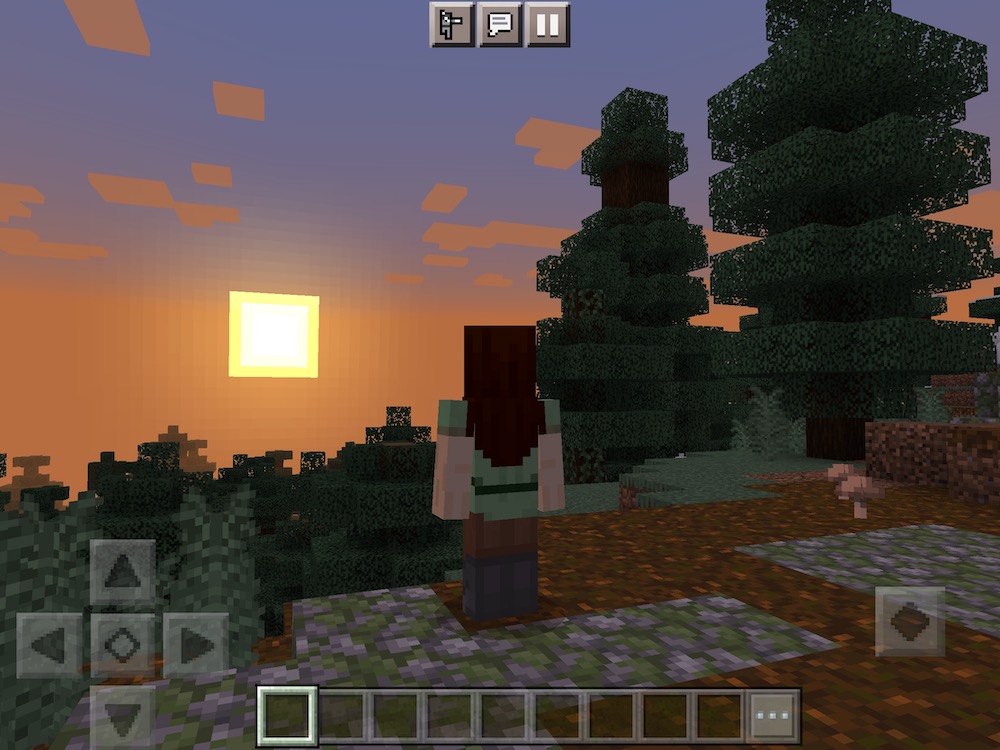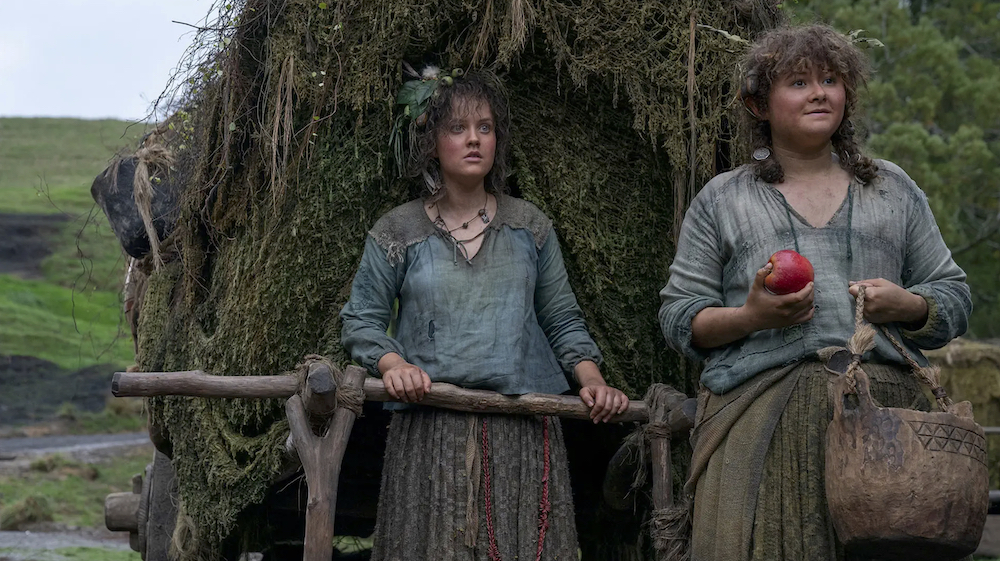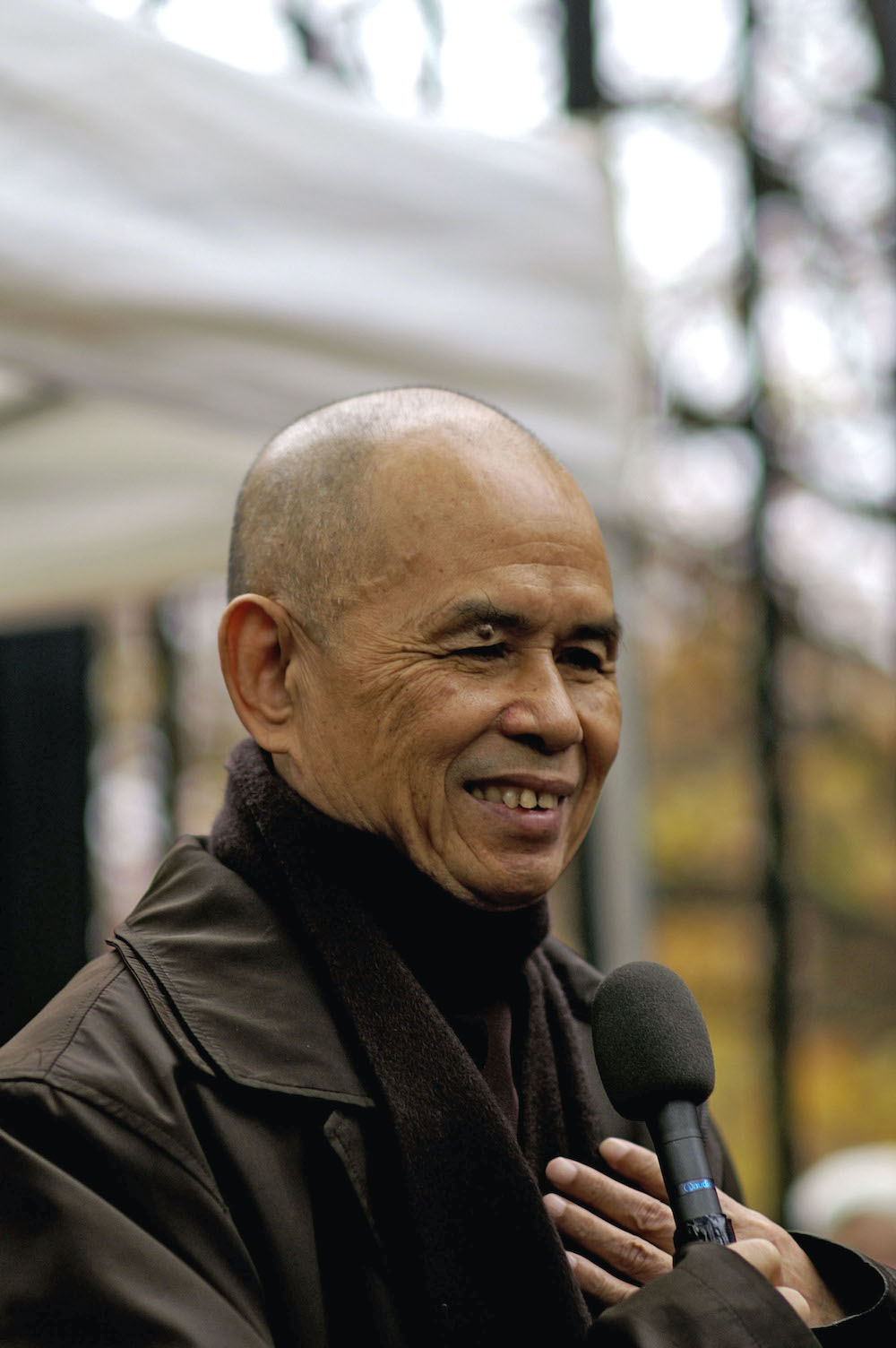Reframing the mining and crafting of blocks in Minecraft as making do with sampled sourced material can help us rethink and reconsider concepts like bricolage and techniques like upāya.
So I started playing Minecraft about a month ago with my oldest son. I know. I’m years behind on this. But any spare time I’ve had to play video games for the past several years has mostly been dedicated to games I used to play when I was younger, or the occasional one-off. I dabbled a bit with Minecraft a couple years ago, but I didn’t stick with it. Now, him and I are both pretty hooked.
He came home from school one day excitedly discussing the prospect of playing the game on his tablet. Friends at school play it and he’s brought it up before in passing. But for whatever reason, this time he was adamant.
I remembered Creative mode was the way to go for learning the basic mechanics without the fear of the nightly mob attacks or starvation. You can fly around in this mode as well, which is also fun, and incredibly convenient. I had a flashback to my first attempt in Survival mode when we were setting up: having no idea what to do each night except dig and bury myself in a hole until sunrise. Then came the dirt hut. Then a door. Then some wooden tools and a bed. And that’s pretty much where I left off until him and I started diving deeper into the game.
After his first Creative mode session, we figured out how to start a multiplayer game at home using both of our tablets. Playing a video game together with your child like this for the first time is such a fun experience, too. I’m sure many parents felt that way their first time as well. He caught on fast, and we’ve been able to do all sorts of creative stuff together as we explore and build. Creative mode is now a sort of experimental and learning arena for us before trying something new in our Survival mode game. We’ve checked out multiple books from the library published by the game developer, Mojang Studios, and we play almost every day.

But anyway, you’re probably wondering why I’m talking about Minecraft in a post that appears to signal something about Buddhism and French anthropology? Well, since I apparently can’t even play video games without thinking critically about what I’m doing, I’ve noticed that being restricted to the use of only the materials you have, and building upon those materials as you progress, corresponds really well to principles underlying remix theory and the concept of bricolage.
In most academic contexts, the concept is typically linked to Claude Lévi-Strauss’ use of the term in La Pensée Sauvage (1962) through an analogy between the bricoleur and the engineer: the bricoleur, as the exemplar “tinkerer” or “handyman,” doesn’t approach projects with tools or resources specifically designed for them, and all practical knowledge being drawn upon in such instances is reactive and retrospective, being directly dependent upon past experience. Correlating activity is combinatorial, involving elements and material that are disparate and not inherently connected or related. And this all is in opposition to the engineer: one who is trained and specifically equipped for particular tasks and projects. In her chapter on bricolage for Keywords in Remix Studies (2017), Annette Markham notes that the term signals the active dimensions of assembly and reuse, since the materials with which one makes do are not like what might be found among specified professions and trades, but are from a collection of what has been picked up along the way. She indicates that usefulness of an object in this context is not based on an external value or quality, but on the particular situation (p. 47).
In “Bricoleur and Bricolage: From Metaphor to Universal Concept” (2012), Christopher Johnson frames the bricoleur’s toolset as being “the contingent result of all the occasions there have been to renew or enrich the stock or to maintain it with the remains of previous constructions or destructions” (p. 361). To be a bricoleur means that one is able to make do with whatever is at hand in order to solve problems or make sense of situations. It is a characteristic resourcefulness for whatever is presented. A bricoleur is enabled to create based on the materials at hand, but also restricted by what can be created because of it (p. 362). Markham points out that such structural limitations are what tend to set this historical term apart from remix as well, with certain parameters or restrictions in place that necessarily inhibit the type of work able to be done and, as a result, its outcomes (p. 51).
The basic mechanics of Minecraft revolve around mining and crafting various collected items into tools, weapons, potions, food sources, building materials, and so on. One expands these possibilities with things like crafting and enchantment tables, a furnace, a brewing stand, and more advanced automated mining, farming, and crafting techniques. Day One for most players in Survival mode probably revolves around a similar pattern of gameplay that involves chopping down trees with your hand, turning the wood into planks, turning the planks into a crafting table, using the crafting table to turn planks into sticks to make a wooden pickaxe to then use to more effectively mine things like cobblestone, which can then be combined with sticks to make stone tools and weapons. The sequence never really stops; it loops as needed. The game is simply predicated upon the sampling of raw material, the combinations of that raw material into other things, and either the use of those combinations to procure new raw material or their own implication in a different combinatory product. Everything is reactive and retrospective, based upon what has been picked up along the way. You’re inherently and characteristically always making do with whatever is at hand to progress in the game, achieve results, and demonstrate techniques, ability, and knowledge to others – in whatever way you’re able to do so.
See. I’m not crazy here. And I’m sure Mojang Studios was totally juggling titles like Bricolage Blocks and Bricoleur Builders as possible contenders too.
But there’s another context I’m reminded of as well when we link making do to achieving certain types of results.
In Buddhist philosophy, there’s a technique often employed for teaching and conveying knowledge based on setting, particular resources, and ability of all involved: upāya-kauśalya. Usually translated as “skill in means” or “skillful means,” upāya-kauśalya (upāya for short) is also a sort of making do, in that teachings are adapted to match the level of understanding and grasp of one’s audience. The technique is usually traced back to the Buddha’s own enlightenment experience, when he needed to figure out a way to convey something inexplicable to others. His earliest sermons after that experience were clear examples of him making do with the contextual circumstance, needs, apprehension, and ability of his audiences. There was simply no universal way to convey or communicate insight that was beyond the limitations of language without shaping it as needed.
The broader idea here is that the actual teachings aren’t what is most important in Buddhist thought: they are functional, and because of that, they might appear differently based on teacher and student, just as long as the meaning remains the same. The so-called raft simile in the Alagaddūpama Sutta famously conveys how the teachings are like a raft to help you cross over to the other side of a shore: once you get there, you no longer need the raft, so it’s not something you should cling to anyway, or privilege out of principle, since its only purpose was in helping you get to where you were going. Just like Buddhist teachings. And those teachings, like rafts, can vary in their composition quite a bit, especially when they’re constructed based on the builder’s ability, the resources available to build the raft, and who the occupants of that raft are going to be exactly.
Sound familiar?
Upāya demonstrates characteristic processes of repurposing and remixing amid instructional practices. And later on, the concept was expanded in Mahāyāna contexts from the notion of a skillful teacher using parables, metaphors, anecdotes, and the like, to the teachings as a whole being an exercise of skillful means, which carries with it the presumption that the teachings are inherently provisional and can be dismantled, abandoned, completely reformed, or wildly interpreted. In “Literal Means and Hidden Meanings: A New Analysis of Skillful Means” (2009), Asaf Federman likens upāya to “a radical hermeneutic device” by Mahāyāna Buddhists that allowed them to advance new ideas without negating the Buddha’s words or deeds. It provided them with the ability “to challenge central Buddhist paradigms and offer a reorientation of the facts” in a reformative and reinterpretive, but not heretical, sort of way (p. 125).
Examples of these sorts of tactics can be found within the Lotus Sutra and among stories of enlightened beings (bodhisattvas) doing what needs to be done in order to help others attain enlightenment as well. The parable of the burning house in the third chapter of the former is a classic example: a father lies to his children to get them outside to escape a devastating fire, thus saving their lives, but while also breaking the fourth precept regarding falsehood. A lie was told, but the motivation was to get the children to safety. In a similar way, teachers might take seemingly drastic liberties in order to also save others from the danger of not grasping Buddhist teachings. But again, these liberties involve teachers making do with what is at hand – what these Buddhist bricoleurs have to work with, in other words.
And really, in terms of progress and understanding – in open world, sandbox games like Minecraft (if only they went with Bricolage Blocks!) and philosophical traditions alike – it always comes down to available resources, contextual circumstances, and the ability of the bricoleur to remix and make do with whatever is at hand. Reframing the mining and crafting of blocks as making do with sampled sourced material can also help us rethink and reconsider concepts like bricolage (and remix) and techniques like upāya when we highlight their similarities. And hey, if playing Minecraft with my oldest son (and increasingly his younger brother as well!) helps instill the fact that combinatory processes underlie all creative practices, and that recombination, repurposing, reinterpreting, and reconfiguring are the fundamental mechanics of our own world as well, then I think this is both some of the most enjoyable and educational father-son time we could be having right now.
That said, I really need to get back to reading about automated farming and this rather curious mineral called redstone before we sit down to play tomorrow.
Screenshot via the mobile version of Minecraft for iPadOS (Mojang Studios 2022).



